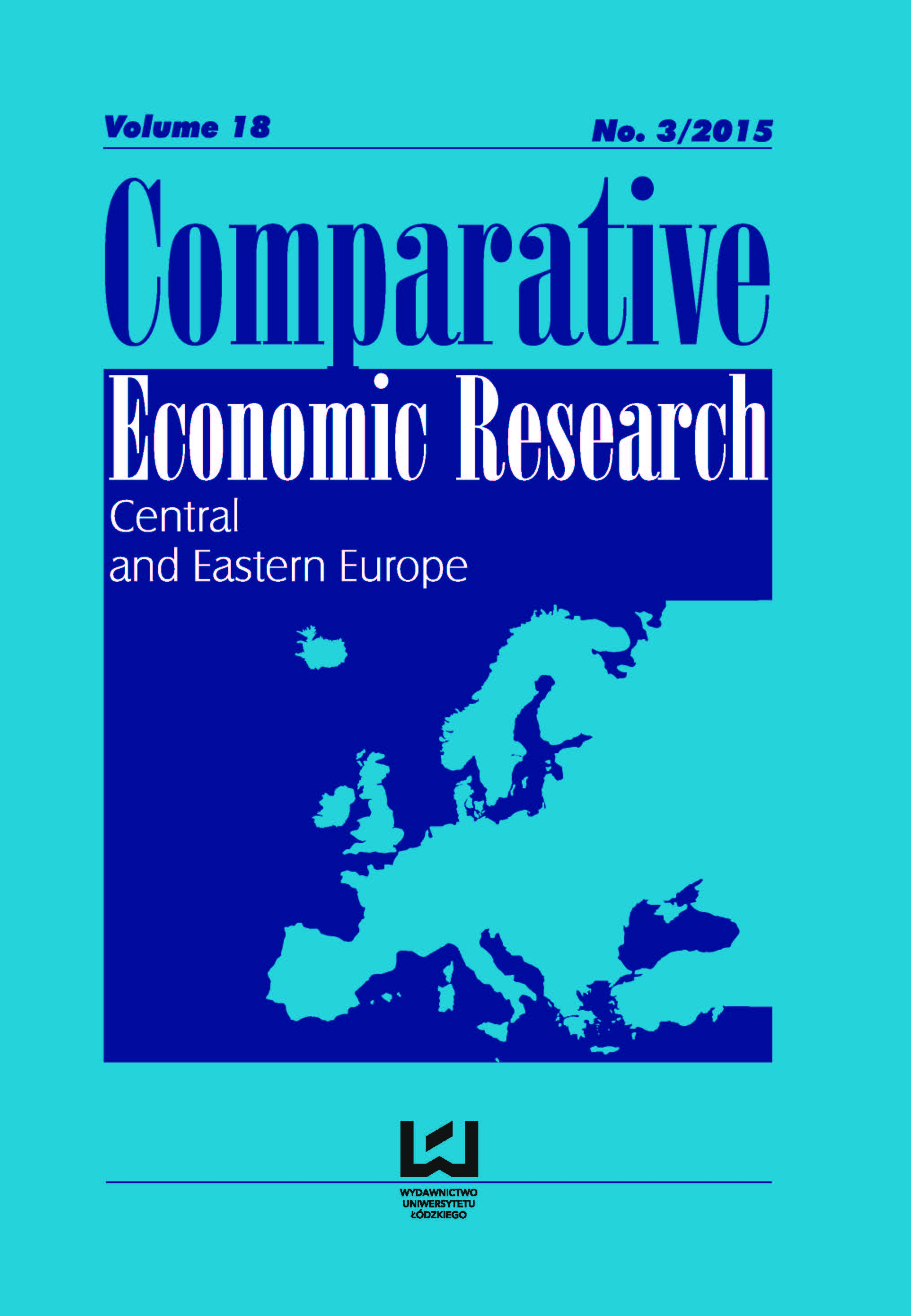The Essence Of The Emerging Markets’ Investment Risk. Comparative Analysis Of American And Central European Convertible Bond Issuers
DOI:
https://doi.org/10.1515/cer-2015-0022Keywords:
emerging market, convertible bond, rating, financingAbstract
This paper attempts to identify the determinants of credit ratings for debt instrument issuers in the so-called emerging markets. The study was conducted on the sample of convertible bonds issuers in 2001-2012, half of which originated from Central and Eastern Europe, while the rest were U.S. operators. The analysis is focused exclusively on pairs of bonds with the same rating given by the British Fitch agency, which specialises in analysing Central and East European markets. The conducted studies show that solvency risk, interpreted as indebtedness, financial leverage and current solvency, is a major difference between the two groups of bonds. Changes in indebtedness, i.e. in assets held by foreign investors, are apparently the reasons of higher requirements for issuers from the emerging markets.
Downloads
References
Altman E.I. (2005), An emerging market credit scoring system for corporate bonds, ‘Emerging Markets Review’, no. 6(4).
Google Scholar
Black F., Scholes M. (1973), The Pricing of Options and Corporate Liabilities, ‘Journal of Political Economy’, no. 81(3). doi: 10.1086/260062
Google Scholar
Boutron E., Hubler J. (2010), Issuers' Features and Stock Market Reaction to Convertible Bonds Issuance: Evidence from the French Market, Europlace Institute of Finance, IAE Congrès.
Google Scholar
Brennan M., Kraus A. (1987), Efficient Financing under Asymmetric Information, ‘Journal of Finance’, no. 42(5). doi: 10.1111/j.1540-6261.1987.tb04363.X
Google Scholar
Brennan M., Schwartz E. (1988), The Case for Convertibles, ‘Journal of Applied Corporate Finance’, no. 1(2).
Google Scholar
Campbell,J., Taksler G. (2003), Equity volatility and corporate bond yields, ‘The Journal of Finance’, no. 58. doi: 10.1046/j.1540-6261.2003.00607.X
Google Scholar
Diaz Weigel D., Gemmill G. (2006), What Drives Credit Risk in Emerging Markets? The Roles of Country Fundamentals and Market Co-Movements. ‘Journal of International Money and Finance’, no. 25. doi: 10.1016/j.jimonfin.2006.01.006
Google Scholar
Fitch Rating (2012), Treatment and Notching of Hybrids in Nonfinancial Corporate and REIT Credit Analysis. Sector-Specific Criteria, December 2012, www.fitchratings.co
Google Scholar
Fitch Ratings (2013), Definitions of Ratings and Other Forms of Opinion, Feb 2013, www.fitchratings.com.
Google Scholar
Green R. (1984), Investment Incentives, Debt, and Warrants, ‘Journal of Financial Economics’, no. 13(1). doi: 10.1016/0304-405X(84)90034-5
Google Scholar
Isagawa N. (2000), Convertible Debt: an Effective Financial Instrument to Control Managerial Opportunism, ‘Review of Financial Economics’, no. 9(1).
Google Scholar
Jalan P., Barone-Adesi G. (1995), Equity Financing and Corporate Convertible Bond Policy, ‘Journal of Banking and Finance’, no. 19(2).
Google Scholar
Jensen M., Meckling W. (1976), Theory of the Firm: Managerial Behaviour, Agency Costs and Ownership Structure, ‘Journal of Financial Economics’, no. 3(4). doi: 10.1016/0304-405X(76)90026-X
Google Scholar
Kim Y. (1990), Informative Conversion Ratios: A Signalling Approach, Journal of Financial and Quantitative Analysis, no. 25(2).
Google Scholar
Marszalek J. (2014), Optimal Decision for Convertible Debt Financing - Some Observations from the American Market, ‘European Financial Systems 2014 - Proceedings of the 11th International Scientific Conference’, Masaryk University, Brno, Czech Republic.
Google Scholar
Mayers D. (2000), Convertible Bonds: Matching Financial and Real Options, ‘Journal of Applied Corporate Finance’, no. 13(1).
Google Scholar
Moody’s New Instruments Committee and Fundamental Credit Committee (2008), Moody’s Hybrid Tool Kit: Limiting Equity Credit in the Capital Structure, March 2008, www.moodys.com
Google Scholar
Standard & Poor’s (2012), Equity Credit For Corporate Hybrid Securities, www.standardandpoors. com.
Google Scholar
Stein J. (1992), Convertible bonds as backdoor equity financing, ‘Journal of Financial Economics’, no. 32(1). doi: 10.1016/0304-405X(92)90022-P
Google Scholar
Downloads
Published
How to Cite
Issue
Section
License

This work is licensed under a Creative Commons Attribution-NonCommercial-NoDerivatives 4.0 International License.











